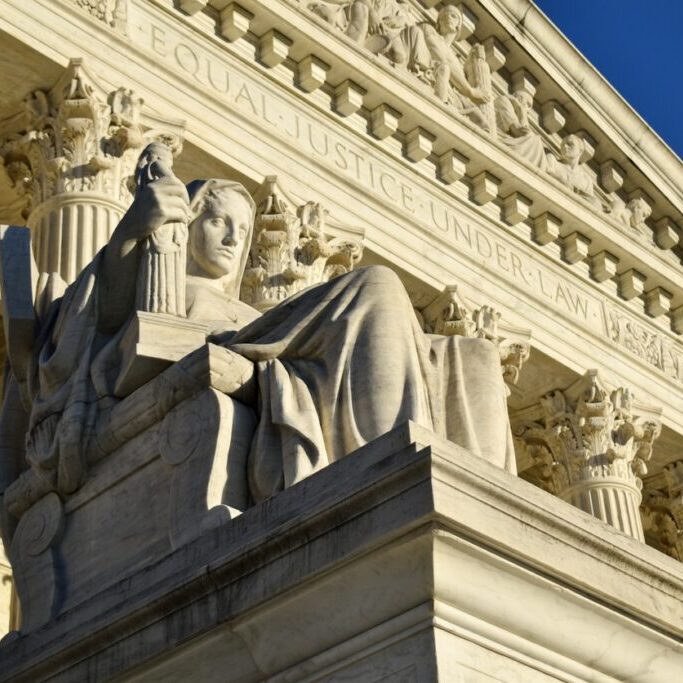Insights < BACK TO ALL INSIGHTS
Major Developments on the Horizon for Bankruptcy Law
Major Developments on the Horizon for Bankruptcy Law
By: George Calhoun
The Supreme Court rarely hears bankruptcy cases – typically one per term. But 2023 has been different, the Court already has ruled on four bankruptcy matters, including sovereign immunity issues with respect to Puerto Rico and Indian tribes, appellate review of § 363 sale orders, the discharge of debts obtained by another’s fraud. In addition to those cases, the Court is currently poised to decide two major bankruptcy cases arising out of mass tort bankruptcies. The Court will hear argument on December 4 in the Purdue Pharma bankruptcy in which it will consider the propriety of nonconsensual third-party releases. The Court also recently accepted certiorari in the Kaiser Gypsum bankruptcy to decide the issue of insurer standing in mass-tort bankruptcy cases. Additional cases concerning the appropriate standard for the dismissal of a bad faith bankruptcy are currently pending in the Fourth Circuit (Bestwall and DBMP) and the Third Circuit (J&J/LTL Management) and reflect another burgeoning circuit split. All these issues will shape the future for mass-tort, and many other, bankruptcy cases for years to come. This is what you need to know.
In Harrington v. Purdue Pharma L.P., the Court will decide whether a bankruptcy court can issue nonconsensual third-party releases. Although such releases are expressly authorized in limited circumstances under Section 524(g) of the Bankruptcy Code that is applicable only in asbestos cases, it has become common to issue such releases in non-asbestos cases. The Purdue Pharma case involves particularly difficult facts: the Bankruptcy Court approved a release of the Sackler family in exchange for contributions to a settlement in the bankruptcy case in connection with massive liabilities connected to the opioid crisis. Another case pending in the Third Circuit, Boy Scouts of America, involves third-party releases for tens of thousands of scouting organizations and related companies.
Such releases are particularly important to parties making substantial contributions to a bankruptcy plan – or which insurance to a debtor – to provide finality and prevent risks of double payment. But because mass settlements out of bankruptcy cannot bar nonconsenting plaintiffs, bankruptcy has become the preferred venue for mass tort resolutions. That factor, and the need to obtain super-majority creditor consent to plans, often results in high settlement values and creditor control of the settlement process (though every case is different). In general, however, recent years have shown a development of a tradeoff, full relief for the parties paying into a plan in exchange for what the plaintiffs or others may view as favorable settlement terms. If the Supreme Court bars nonconsensual releases, this balance will be upset and it will be increasingly difficult to reach resolution in mass-tort bankruptcies.
The Kaiser Gypsum cases poses a different question: must the courts hear from the parties being asked to pay for the claims in a bankruptcy. In Kaiser Gypsum, claims that were potentially covered by Truck Insurance were passed back through to the tort system so that Truck could defend those claims. The courts ruled that Truck’s interests were not impaired and therefore that it lacked standing. Truck argued, among other things, that the plan contained anti-fraud provisions with respect to noninsured claims that should be applied to all claims. This cases presents a somewhat confusing mix of a concept known as “insurance neutrality” and standing. Insurance neutrality has often been presented as a standing concept, but as originally conceived and as argued by the insurance industry, it is simply shorthand for the commonly accepted principle that – with narrow statutorily enumerated exceptions – a bankruptcy may not expand or alter a parties’ contractual obligations or rights. In other word, a bankruptcy court takes the debtors’ contracts as they are. Numerous debtors have tried to get a leg up in future coverage or claim litigation by altering the future playing field through bankruptcy. Where their rights have been protected by “insurance neutrality” stipulations, many insurers have agreed not to object in mass tort bankruptcies because their rights are protected. The Kaiser Gypsum case threatens to mix that concept with one of pure standing. As the Third Circuit has stated previously, the parties responsible for paying claims have standing to object to the proposed method for doing so.1
Finally, the Circuit Courts are facing off with appeals concerning motions to dismiss based on the alleged bad faith filing of various debtors that undergone a divisional merger known as the Texas Two-Step. The Fourth Circuit and Third Circuit disagree over whether a dismissal due to bad faith requires a subjective element of bad faith. The Fourth Circuit says it does, the Third Circuit says it does not. Rather, the Third Circuit concluded that LTL’s lack of financial distress was alone sufficient to dismiss the case. As with the cases currently in the Supreme Court, this presents a case of great interest to the mass-tort bar as it will provide greater clarity on whether solvent companies can access the bankruptcy system to address otherwise insoluble mass tort issues.
1 In In re Global Industrial Technologies, Inc., 645 F.3d 201 (3d Cir. 2011) (“GIT”), an en banc panel of the Third Circuit held that “when a federal court gives its approval to a plan that allows a party to put its hands into other people’s pockets, the ones with the pockets are entitled to be fully heard and to have their legitimate objections addressed. In short, they at least have bankruptcy standing.”





